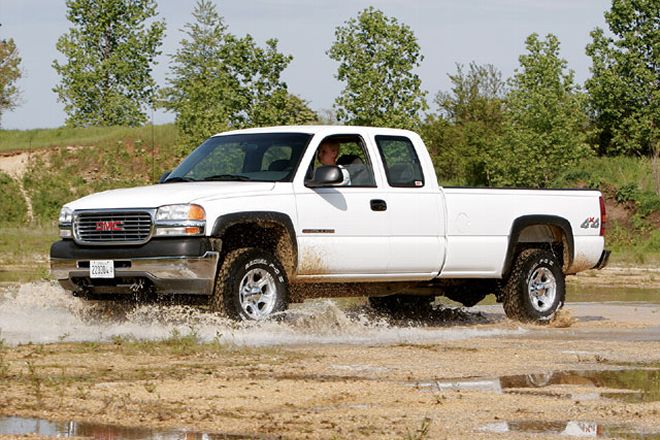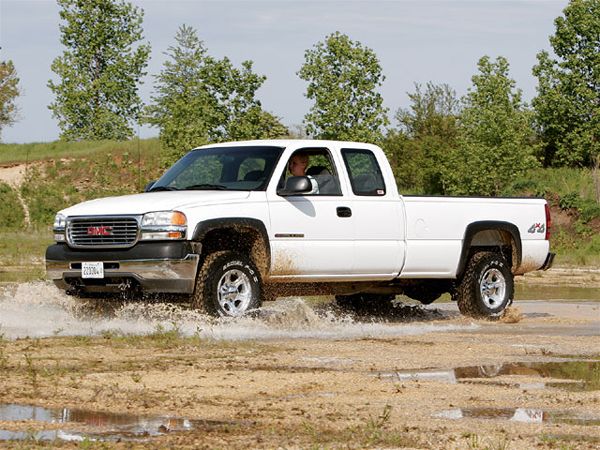
 Ken Brubaker
Senior Editor, Four Wheeler
Ken Brubaker
Senior Editor, Four Wheeler

Besides being visually funky, that inherent droopy front end of your '99-'07 Chevy pickup puts the big hurt on your approach angle. And we all know that a good approach angle is one of the primary components of a capable off-highway rig.
A simple, inexpensive solution is to install a leveling kit under the front of your 1500 or 2500HD truck. We recently installed Off Road Unlimited's kit under our '02 2500HD. This kit raises front suspension height by approximately 1.5 inches, thus leveling it with the rear of the vehicle. The complete $420 kit included a new pair of reindexed cogs (often called "keys"), droop stop pads, and four shocks. These parts are also available separately.
Why didn't we just crank up the torsion bars? Well, cranking up the torsion bars will result in a small amount of height increase under most of these vehicles, but only a limited percentage of vehicles are adjustable to the 1.5-inch figure, which is the magic number to level this particular vehicle.
Matt Dinelli, the owner of Attitude Performance in Arlington Heights, Illinois, installed the kit in about two hours. Following are the highlights of this simple, cost-effective, and worthwhile install.
An added bonus is that the ORU leveling kit allows you to use up to 33-inch tires. We opted for a set of LT265/75R16s, which translates to 31.7 inches in height. This selection helped to further improve ground clearance, but they're not so large as to significantly affect our rig's gearing. Speaking of ground clearance, adding the leveling kit improved our 2500HDs front valance-to-ground height by 1.5 inches (from 13 inches to 14.5 inches). With the new tires installed, our valance-to-ground height jumped to 15.5 inches, which is 2.5 inches more than stock.
Not surprisingly, ride quality was a tad stiffer than stock. This was due mostly to the new shocks (ours were shot) and the stiffer sidewalls of the Dick Cepek F-C II tires compared to the street-oriented Firestone Steeltex Radials we had been rolling. Nonetheless, our rig still retains the same comfortable ride that's inherent to the IFS Chevys. Oh, and the Cepeks offer a major improvement in traction. We were stunned at the grip these tires offer in all types of terrain. Best of all, they still retain excellent road manners that make the daily commute enjoyable.








